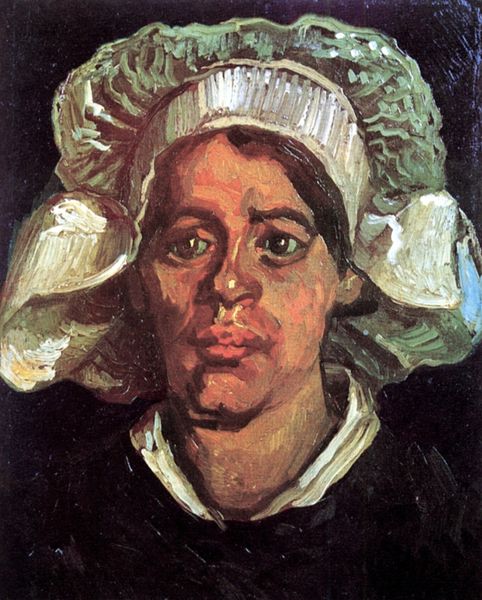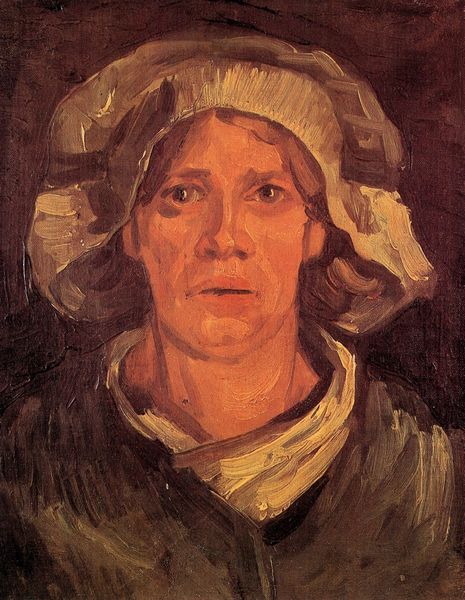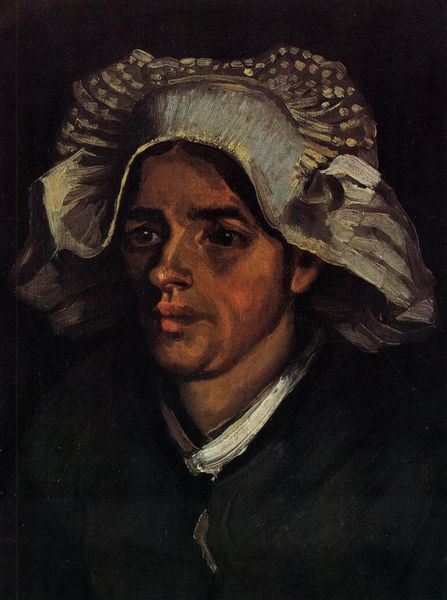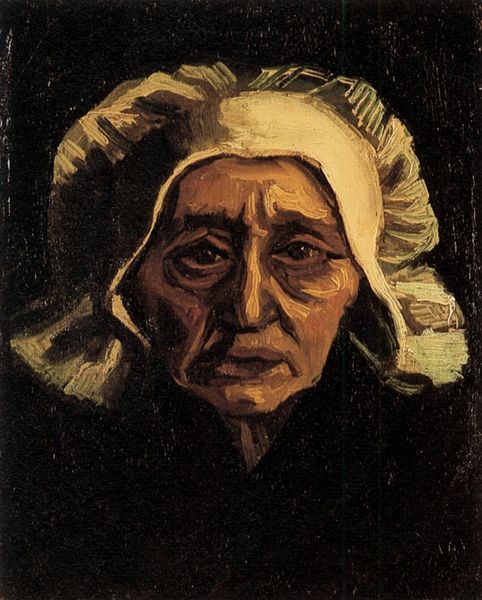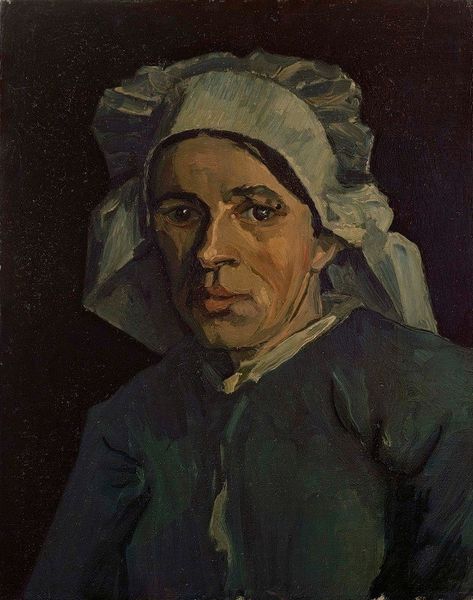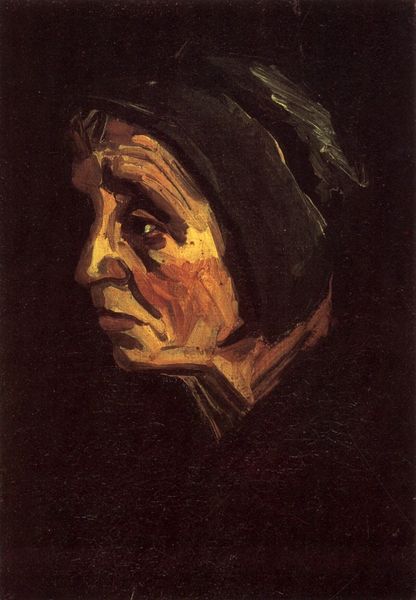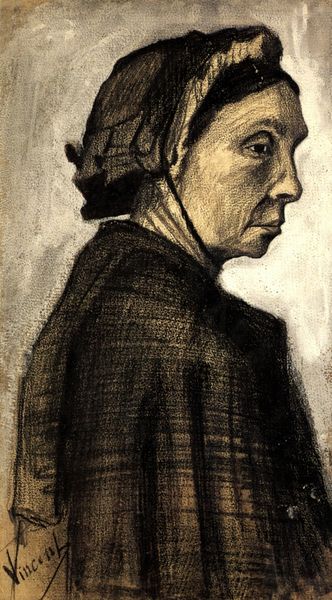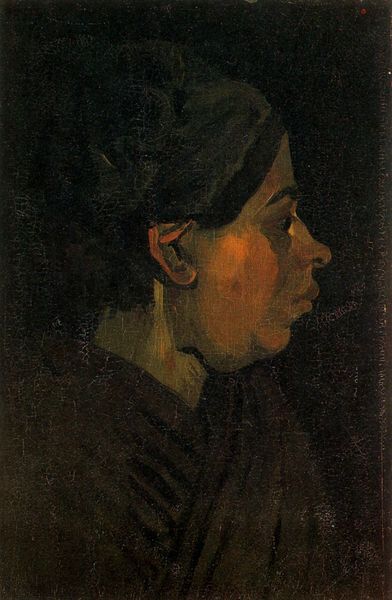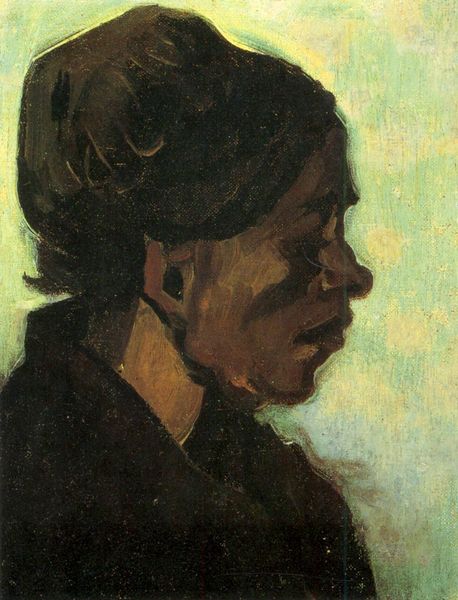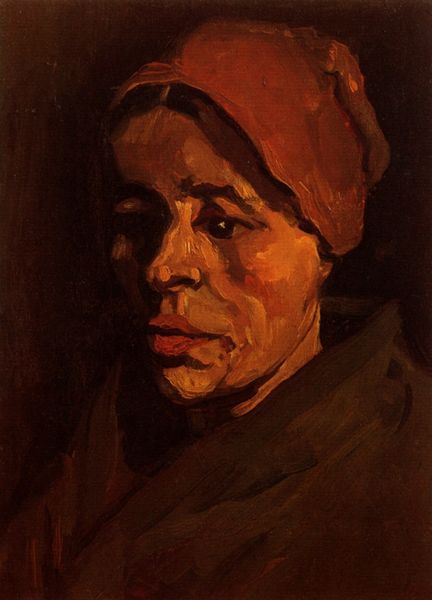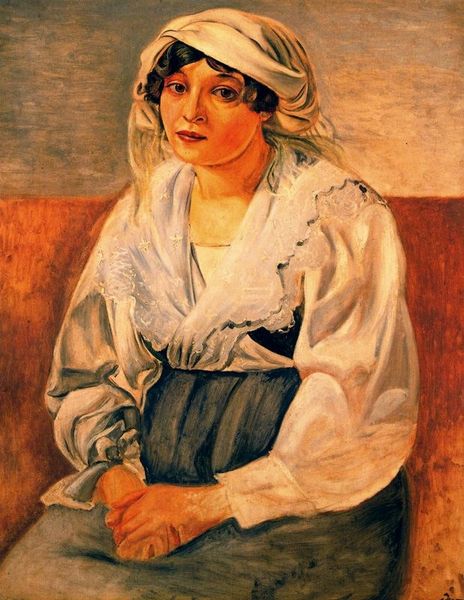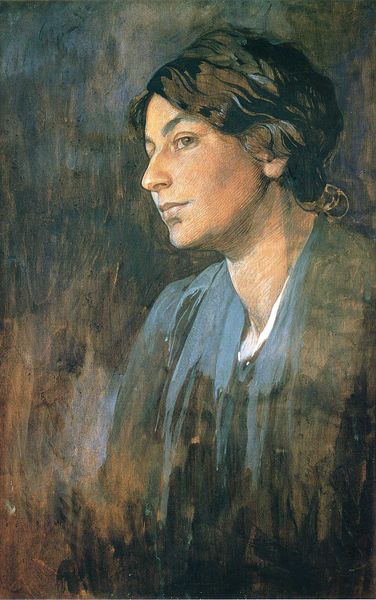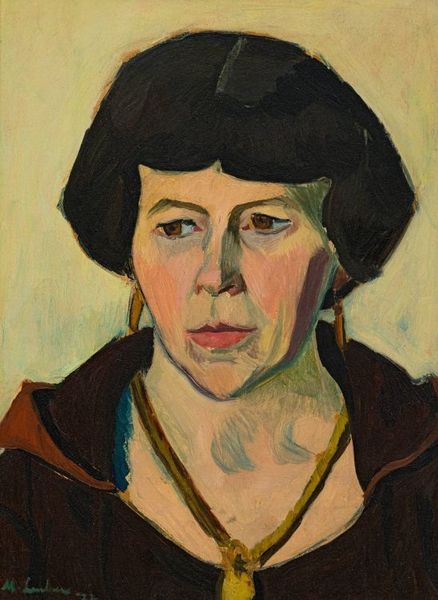
#
portrait
#
portrait
#
portrait reference
#
portrait head and shoulder
#
animal portrait
#
animal drawing portrait
#
portrait drawing
#
facial portrait
#
portrait art
#
female-portraits
#
fine art portrait
#
digital portrait
Dimensions: 43 x 33.5 cm
Copyright: Public domain
Editor: Here we have Van Gogh’s "Peasant Woman, Portrait of Gordina de Groot," created in 1885. It’s quite a striking portrait. There's a solemn intensity to her gaze. How do you interpret this work, particularly given its context? Curator: It's essential to understand this painting as more than just a portrait. It represents Van Gogh’s deep engagement with the lives of working-class people, specifically rural women. Consider the period, the late 19th century: industrialization was pulling many away from the land, disrupting traditional ways of life. Do you see her expression as defiance, resignation, or something else entirely, in the face of these changes? Editor: I see a kind of weariness, but also resilience in her eyes. Like she has seen a lot but keeps going regardless. Curator: Precisely. Van Gogh wasn't just painting a likeness; he was attempting to capture the essence of a social class often marginalized and overlooked. Her simple clothing, her worn features...it's all part of a visual narrative. Think about the male gaze within portraiture; Van Gogh is intentionally shifting away from that ideal by highlighting a woman not usually considered a subject of beauty or importance. Editor: So he's actively resisting the traditional representation of women in art? Curator: Exactly! He's challenging those power dynamics by giving a voice – a visual voice – to a peasant woman. It pushes us to question the societal structures that dictate who gets remembered and how. Editor: That reframes the whole painting. I initially just saw a portrait, but now I understand the social commentary behind it. Curator: Art is always in dialogue with its time. Considering the context allows us to engage with its deeper meanings, even today. Editor: Definitely, it makes me look at other portraits differently now, considering whose stories are told, and whose are left out.
Comments
No comments
Be the first to comment and join the conversation on the ultimate creative platform.
